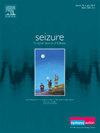Sudden unexpected atraumatic arterial dissection-related death after seizures
IF 2.7
3区 医学
Q2 CLINICAL NEUROLOGY
引用次数: 0
Abstract
Background
To date, it has been assumed that acute seizures which arise in the context of sudden, spontaneous, atraumatic, acute, arterial dissections (SAAADs) are downstream consequences of the dissections driven by syncope or focal brain lesions (FBLs). As this subject has not been formally investigated, likely due to its rarity, we reviewed published case reports (CRs) to examine the veracity of this assumption.
Methods
We included CR describing patients diagnosed with both acute seizures and arterial dissections in order to ascertain the temporal sequence between acute seizures and typical SAAAD symptoms. In addition, we quantified the frequency with which hypotension, bradycardia, and FBLs are associated with acute seizures in such cases.
Results
We found 45 published CRs, six (13.3%) of which involved traumatic arterial dissections and 39 (86.7%) which involved SAAADs. Of the latter, twenty-one (53.8%) described seizures that followed typical SAAAD symptoms (SAFO), and 18 (46.2%) that preceded all such symptoms (SATO). On average, blood pressure and heart rate for both groups exceeded the normal range. Of the CRs that included magnetic resonance imaging (MRI) scans, 8 (100%) SAFO but only 6 (54.5%) SATO patients demonstrated FBLs (p<0.03). A conspicuously large fraction of SATO patients had known epilepsy compared with SAFO patients, (33.3% vs 4.8%; p<0.02). In addition, SATO epilepsy patients’ seizure semiologies frequently resembled their breakthrough seizures (BTS). The most common SAAAD associated with acute seizures was aortic dissection (AoD; 17/45; 37.8%). Nine CRs (20%) described patients who died soon after presentation, seven of which were associated with AoDs, including one epilepsy patient. Six of these seven AoDs occurred in patients who suffered from chronic hypertension (CHTN). All five deaths in the SATO group followed first ever seizures (FES) [four AoDs and one coronary artery dissection (CoAD)].
Conclusion
Acute seizures arising in the context of SAAADs are not necessarily associated with hypotension or FBLs, and frequently appear to precede the associated dissections. These results suggest that seizures could act as triggers for SAAADs. In addition, sudden unexpected atraumatic acute arterial dissection-related death after seizure (SUADAS) might be a distinct cause of sudden death in epilepsy patients.
癫痫发作后突发与创伤性动脉夹层相关的死亡
背景迄今为止,人们一直认为在突发性、自发性、非创伤性、急性动脉断裂(SAAADs)的背景下出现的急性癫痫发作是晕厥或局灶性脑损伤(FBLs)导致的动脉断裂的下游后果。方法我们纳入了描述诊断为急性癫痫发作和动脉交叉患者的病例报告,以确定急性癫痫发作和典型 SAAAD 症状之间的时间顺序。此外,我们还量化了此类病例中低血压、心动过缓和 FBLs 与急性癫痫发作相关的频率。结果我们找到了 45 篇已发表的 CR,其中 6 篇(13.3%)涉及外伤性动脉交叉,39 篇(86.7%)涉及 SAAAD。在后者中,21 例(53.8%)描述了在出现典型 SAAAD 症状(SAFO)后的癫痫发作,18 例(46.2%)描述了在出现所有此类症状(SATO)之前的癫痫发作。平均而言,两组患者的血压和心率都超过了正常范围。在包含磁共振成像(MRI)扫描的 CR 中,8 名(100%)SAFO 患者表现出 FBLs,但只有 6 名(54.5%)SATO 患者表现出 FBLs(p<0.03)。与 SAFO 患者相比,已知患有癫痫的 SATO 患者比例明显更高(33.3% vs 4.8%;p<0.02)。此外,SATO 癫痫患者的发作半身像经常与突破性发作 (BTS) 相似。与急性发作相关的最常见 SAAAD 是主动脉夹层(AoD;17/45;37.8%)。九份病例报告(20%)描述了发病后不久死亡的患者,其中七例与主动脉夹层有关,包括一名癫痫患者。在这七例AoD中,有六例发生在患有慢性高血压(CHTN)的患者身上。SATO组中的5例死亡病例均为首次癫痫发作(FES)后死亡(4例AoD和1例冠状动脉夹层(CoAD))。这些结果表明,癫痫发作可能是 SAAAD 的诱因。此外,癫痫发作后突发非创伤性急性动脉夹层相关死亡(SUADAS)可能是癫痫患者猝死的一个独特原因。
本文章由计算机程序翻译,如有差异,请以英文原文为准。
求助全文
约1分钟内获得全文
求助全文
来源期刊

Seizure-European Journal of Epilepsy
医学-临床神经学
CiteScore
5.60
自引率
6.70%
发文量
231
审稿时长
34 days
期刊介绍:
Seizure - European Journal of Epilepsy is an international journal owned by Epilepsy Action (the largest member led epilepsy organisation in the UK). It provides a forum for papers on all topics related to epilepsy and seizure disorders.
 求助内容:
求助内容: 应助结果提醒方式:
应助结果提醒方式:


